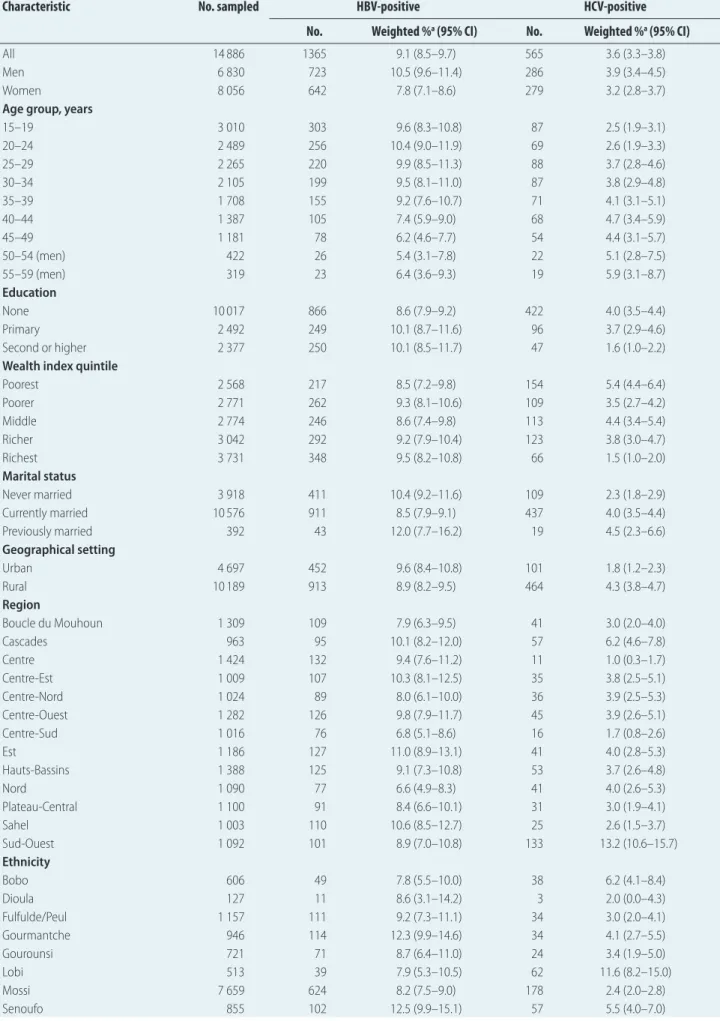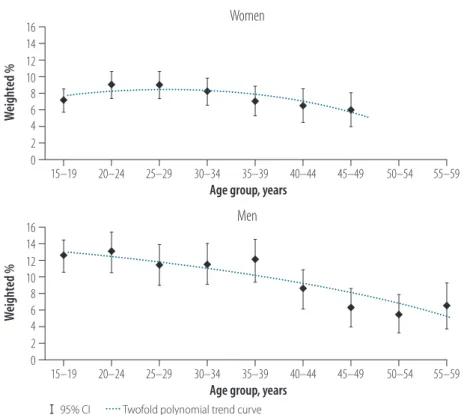Hepatitis B and C virus seroprevalence, Burkina Faso: a cross-sectional study
Texte intégral
Figure




Documents relatifs
The aim of this study was to determine the seroprevalence of HAV antibodies (HAV Ab) among a group of Egyptian children aged 2.5–18 years of different so- cial classes to
A third panel (panel 3) comprised 23 blood donor samples from the INTS: 4 samples tested initially positive with the PRISM HBsAg 5.0 assay (Abbott Diagnostics, Rungis, France) at
Combined use of dried blood spot and rapid molecular systems: A robust solution to monitor hepatitis B virus infection with potential for resource-limited countries... CHB management
Con- tribution of quantitative viral markers to document hepatitis B virus compartmentalization in cere- brospinal fluid during hepatitis B with neuropathies...
Table 2 Characteristics of studies included in the systematic review on HCV antibody detection from DBS compared to venous blood sampling (Continued) Author, Country Study design
This cross-sectional study was undertaken with the aim of determining the seroprevalence and risk factors of hepatitis B virus (HBV) and hepatitis C virus (HCV) among the
Interestingly, the 113 overexpression of human NTCP in permissive hepatoma cells such as Huh7 and HepG2 114 cells that lack endogenous expression of NTCP, conferred
In order to better understand the balance between replication and the immune response against hepatitis B virus (HBV), the viral kinetics in 50 HBeAg-negative